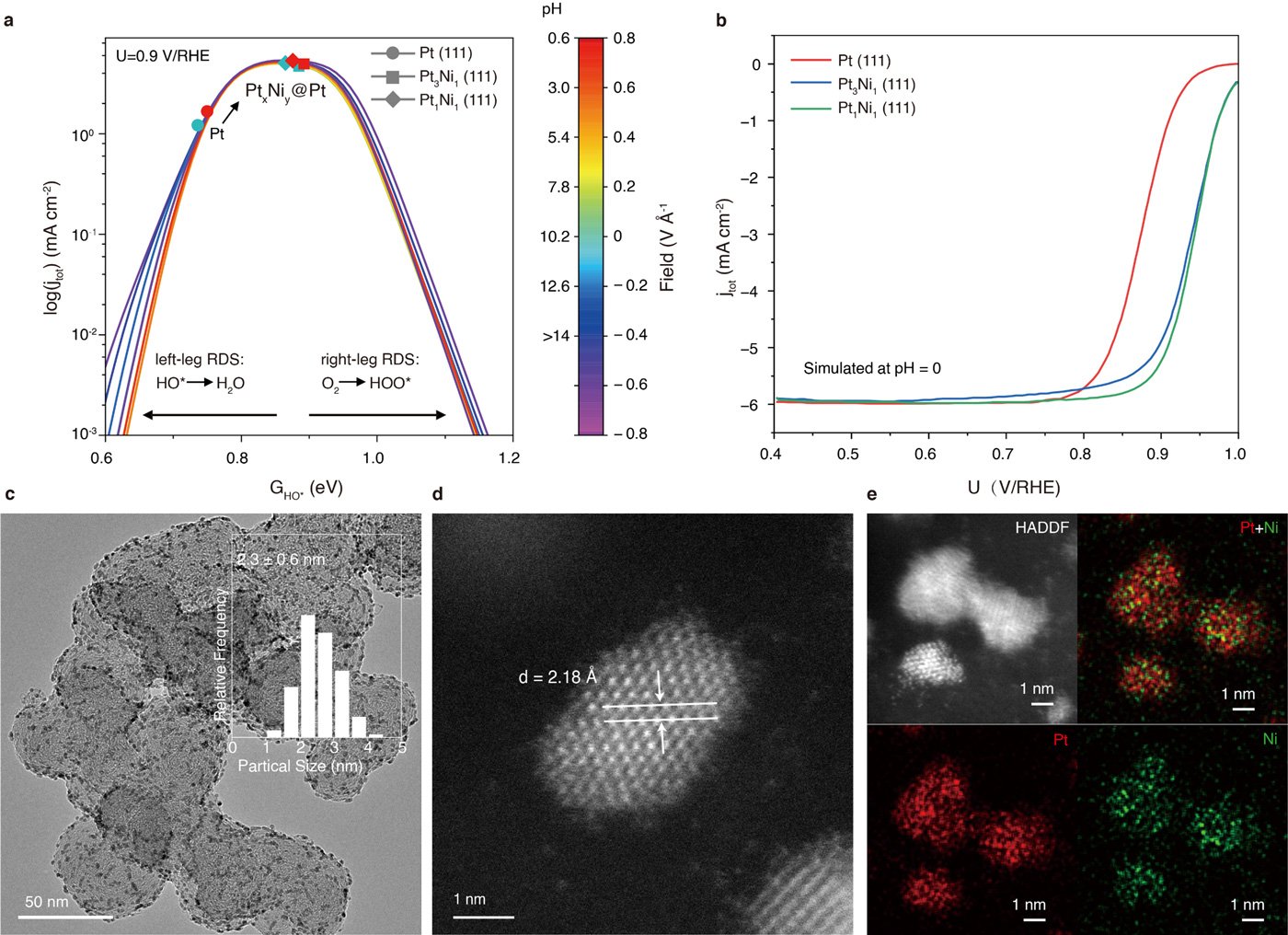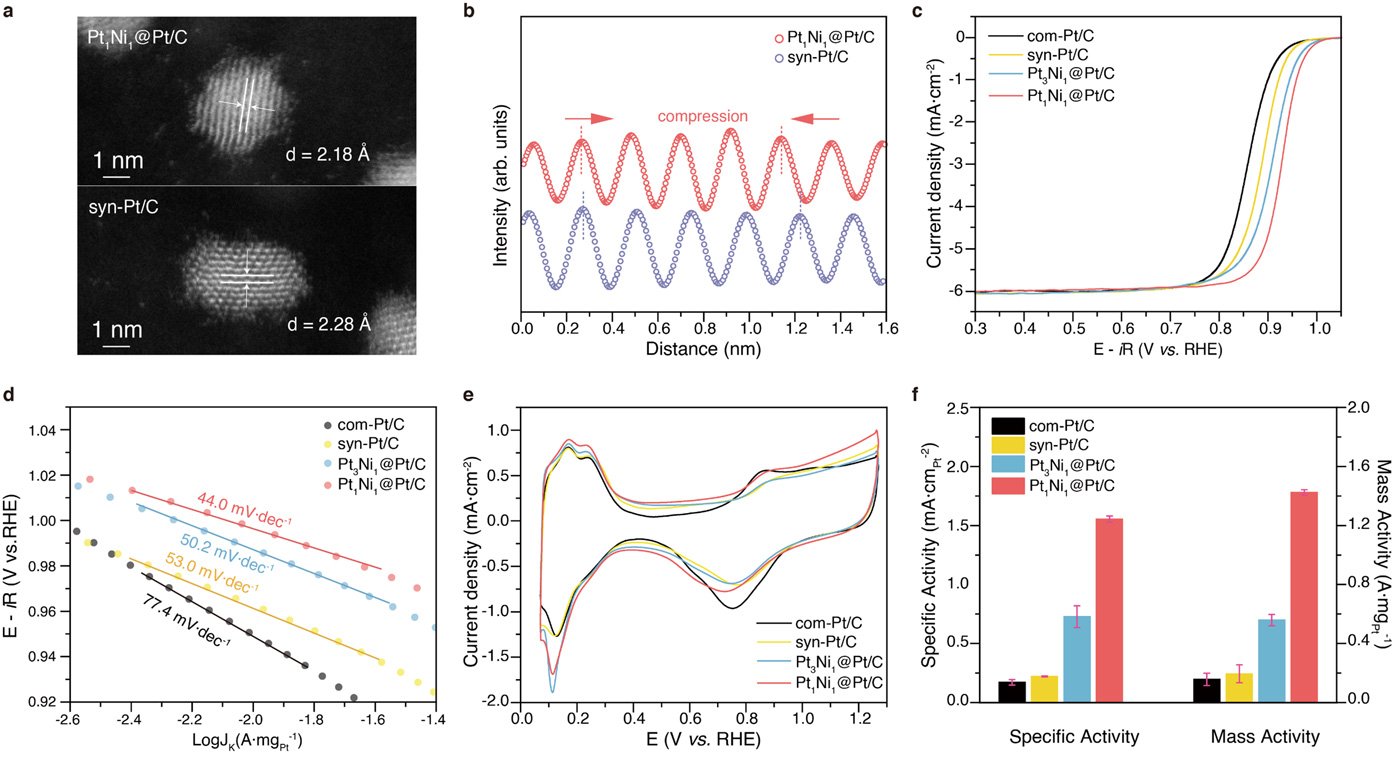Electrocatalysis is a key technology for sustainable energy, and understanding how catalysts work is crucial for improving their performance. One of the challenges in using platinum (Pt) as a catalyst for the oxygen reduction reaction (ORR) in fuel cells is that it reacts too slowly and doesn't work efficiently enough. A promising solution is to adjust the surface of the catalyst to improve its activity.
"We can enhance the performance of platinum by tuning its surface structure, which helps it react more efficiently," says Di Zhang, a specially appointed assistant professor at Tohoku University's Advanced Institute for Materials Research (WPI-AIMR). This surface adjustment, called surface strain, occurs when the arrangement of atoms on the surface of the material is either compressed or expanded. One example is the Pt-Ni system, where platinum is paired with nickel to improve its performance.
While studies have shown that Pt-Ni works well, "many of these studies haven't fully explored which parts of the material are actually active during the reaction," explains Zhang. "Also, most models haven't accounted for how pH affects the reaction, a crucial factor in real-world applications."
To address this, Zhang and an international team of researchers created a new model that takes into account the realistic conditions of electrochemical reactions. The model was used to design a new type of Pt-Ni catalyst, called Pt1Ni1@Pt/C, which has a core-shell structure.
The results were impressive: "Our new catalyst shows a significant boost in activity compared to traditional platinum catalysts," says Hao Li, an associate professor at WPI-AIMR, who, along with Zhang and others, co-authored a paper detailing the findings in the journal Nature Communications. "We found that Pt1Ni1@Pt/C has a mass activity of 1.424 ± 0.019 A/mgPt and a specific activity of 1.554 ± 0.027 mA/cmPt²."

The new catalyst also proved to be extremely durable, maintaining 98.4% of its activity even after 70,000 cycles. Additionally, the researchers used a special method to anchor tiny Pt-Ni nanoparticles (~2.6 nm) to a carbon substrate, creating bonds that prevent the particles from moving or clumping together.

They then created a Pt-rich shell around the Pt-Ni core, applying a compressive strain that helped improve the catalyst's ability to adsorb oxygen, making the reaction more efficient. This core-shell design, as well as the improved surface strain, contributed to the catalyst's excellent performance and durability.
"Our research showed that by combining new models, innovative material design, and advanced synthesis techniques, Pt-Ni catalysts can be made much more efficient and stable for use in energy technologies," adds Li. Ultimately, the work opens the door to longer lasting catalysts that could play a big role in the future of renewable energy.

- Publication Details:
Title: Carbon-anchoring synthesis of Pt1Ni1@Pt/C core-shell catalysts for stable oxygen reduction reaction
Authors: Jialin Cui, Di Zhang, Zhongliang Liu, Congcong Li, Tingting Zhang, Shixin Yin, Yiting Song, Hao Li, Huihui Li, Chunzhong Li
Journal: Nature Communications






